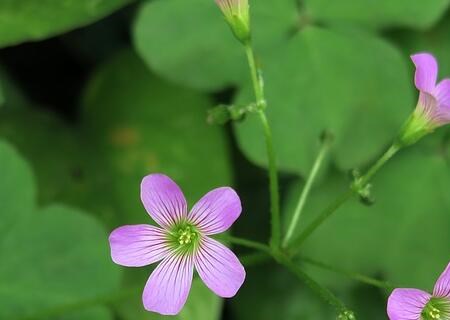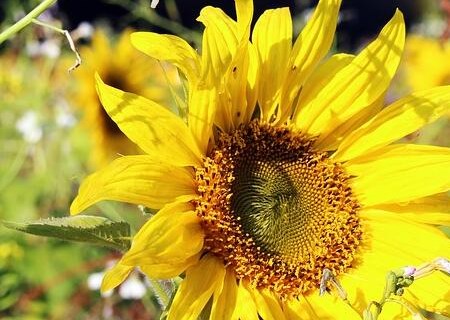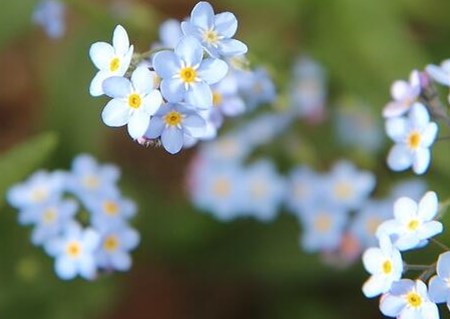What are the seed planting methods of herbaceous clover? What are the prospects for planting clover? Can I eat it?
Clover: a general term for a variety of herbs with three finger-shaped compound leaves, including some species of Oxalis in Leguminosae and Medicago sativa and Oxalis in Leguminosae. What do you know about the planting methods of clover seeds? What are the prospects for planting clover? Can I eat it?

I. planting method of clover
1. Soil and farming
The clover seed is small, the seedling is slender and the emergence ability is weak, and the growth at the seedling stage is extremely slow. in order to save the seedling, the soil preparation must be fine, no matter sowing in spring or autumn, it is necessary to prepare the soil in advance, first turn over stubble shallowly, remove debris, store water and preserve soil moisture, and then turn deeply and rake the ground every 10 to 15 days, leveling the ground, so that the soil is broken, and the sowing layer is loose, so as to be sown.
2. Fertilization
Clover is a leguminous plant, which has the ability of nitrogen fixation, but the rhizobium has not been formed at seedling stage. The culture method of rhododendron should supplement a small amount of nitrogen fertilizer to strengthen seedlings, and the application of phosphorus and potassium fertilizer can increase yield. After the formation of the flat, only phosphorus and potash fertilizer is needed. Before sowing, 667m2 applied organic fertilizer 1500~2000kg and mixed with calcium superphosphate 15~20kg as base fertilizer. When the plants are short and the leaves are yellow, a small amount of nitrogen fertilizer should be applied. Generally, urea 2.5kg, potassium fertilizer 5kg and calcium magnesium phosphate fertilizer 5kg should be applied 15 days after emergence to promote strong seedlings and increase grass yield.
3. Sowing and seed treatment
The best sowing time is spring and autumn, and the optimum growth temperature is 19: 24 ℃. Spring sowing can be from the end of March to the end of April, and the temperature is above 15 ℃. Autumn sowing usually starts from the middle to late September. The seeds should be soaked before sowing. The seeds should be soaked with water 1.5kg per 1kg seed and 1g ammonium molybdate for 12 hours, and then sowed with calcium magnesium phosphate fertilizer 5~10kg or yellow sand 5~10kg. When sowing 0.4~0.5kg in artificial grassland 667m2, the sowing amount should be small in humid areas and large in arid areas. Sowing depth 1~2cm. Sowing too deep is not easy to emerge, so it should be properly mastered according to the soil texture and dry and wet conditions. There are a variety of sowing methods, including single sowing, mixed sowing, strip sowing and sowing.
4. Field management
Before seedling emergence after sowing, if you encounter soil consolidation, rake in time to break the plate layer to facilitate seedling emergence. Clover grows slowly in seedling stage and is easily damaged by weeds. In seedling stage, clover should be ploughed and loosened to weed for 1 or 2 times, and pests should be controlled in time. Sowing in September, blooming in April and blooming in the middle of May, the grass layer is high 15~20cm during flowering period, which is the suitable time for cutting and utilization. After cutting, the regeneration ability is strong, and the second stubble grass layer can be formed quickly to cover the grassland. In the hot season, clover stops growing. Large weeds should be removed in time within 2-3 years after the formation of grass cover. If the lack of seedlings is caused by high temperature and drought in summer, it can be reseeded in autumn to restore grassland productivity. If a large area of planting is used as grazing land, light grazing can be carried out at 1-2 months after sowing and when the weeds are high 20~25cm, so as to inhibit the growth of weeds. There are few diseases of clover, but the harvest is not timely, and sometimes brown spot and powdery mildew occur, which can be cut and used first, and then controlled by Bordeaux solution, stone-sulfur mixture or carbendazim.
The grassland growing for more than 2 years has compact soil layer and poor air permeability. before turning green in spring and autumn and before regeneration after grazing and cutting, rake soil should be raked, combined with soil topdressing, and calcium superphosphate 20~25kg should be applied with 667m2 to facilitate the growth and development of new buds and roots. Clover has higher requirements for soil moisture, irrigation conditions, when the soil is dry, or combined with topdressing irrigation.
2. analysis on the planting prospect of clover.
1. The medicinal value of clover.
There are mainly two kinds of clover, one is clover, in which the medicine is called "Sanxiao clover", and its flower color is white and red, which has the effect of clearing heat and cooling blood; second, sorrel, some wild flowers are yellow, and some are purple leaves or red flowers; it also has the effect of clearing heat and cooling blood and calming the nerves. Clover has a certain therapeutic effect on jaundice, gastric ulcer bleeding and other diseases, as well as relieving symptoms such as stomach heat pain and weakness of spleen and stomach. So the value of clover can not be underestimated, the small body is of great value.
2. The decorative function of clover.
As a fresh plant, potted clover can be used as a green plant for family decoration, which can not only comfort the family environment, but also beautify the family atmosphere. You can also co-plant with other plants as a foil to appreciate the beauty from another point of view.
3. The greening and planting value of clover.
Clover is widely distributed and adaptable, among which Trifolium repens is a kind of excellent forage grass rich in protein and minerals, which can be adapted in both acidic and alkaline soil, so it has a great prospect in China. At the same time, because it also plays a huge role in soil and water conservation, it can be used as a green plant, in addition to decoration, it can also be planted in a large area, which has good economic and ecological benefits.
Third, can you eat clover
You can eat clover. There are two kinds of clover, one is green lawn clover, traditional Chinese medicine name: Sanxiao, flowers are mostly white, but also red. Flat in nature and slightly sweet in taste. It has the effect of clearing away heat and cooling blood. Second, sorrel, those with yellow flowers (wild), those with red flowers and purple leaves are mostly used for greening. It is cold and sour. It has the effect of clearing heat and cooling blood and calming the nerves. For cold and fever, enteritis, diarrhea, urinary tract infection, snakebite.
Clover is an excellent forage grass, people can taste it occasionally, but if they eat too much, they will get indigestion. Since clover can be used in medicine, it is a third of the poison, eating indiscriminately will lead to adverse consequences.
Time: 2019-03-18 Click:
- Prev

What are the planting methods of dwarf sunflower seeds? When will it be planted? Will it bear melon seeds?
Dwarf sunflower is a new variety of ornamental flowers planted in the ground, which has a short history of artificial cultivation, but it has developed rapidly, and now it has become the new darling of the flower family. So what are the planting methods of dwarf sunflower seeds? When will it be planted? Will it bear melon seeds?
- Next

What are the methods of planting forget-me-not seeds of Arnebiaceae? What are the effects and effects? Instructions for the production of scented tea
Do not forget me, is the Arnebia family do not forget my plant. Forget-me-not is a perennial herb with a height of 30-60cm. Whorled Cymes, 10-15 cm long; what are the ways to plant forget-me-not seeds here? What are the effects and effects? Instructions for the production of scented tea
Related
- Fuxing push coffee new agricultural production and marketing class: lack of small-scale processing plants
- Jujube rice field leisure farm deep ploughing Yilan for five years to create a space for organic food and play
- Nongyu Farm-A trial of organic papaya for brave women with advanced technology
- Four points for attention in the prevention and control of diseases and insect pests of edible fungi
- How to add nutrient solution to Edible Fungi
- Is there any good way to control edible fungus mites?
- Open Inoculation Technology of Edible Fungi
- Is there any clever way to use fertilizer for edible fungus in winter?
- What agents are used to kill the pathogens of edible fungi in the mushroom shed?
- Rapid drying of Edible Fungi

